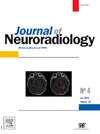BrainAGE latent representation clustering is associated with longitudinal disease progression in early-onset Alzheimer’s disease
IF 3.3
3区 医学
Q2 CLINICAL NEUROLOGY
引用次数: 0
Abstract
Introduction
Early-onset Alzheimer’s disease (EOAD) population is a clinically, genetically and pathologically heterogeneous condition. Identifying biomarkers related to disease progression is crucial for advancing clinical trials and improving therapeutic strategies. This study aims to differentiate EOAD patients with varying rates of progression using Brain Age Gap Estimation (BrainAGE)-based clustering algorithm applied to structural magnetic resonance images (MRI).
Methods
A retrospective analysis of a longitudinal cohort consisting of 142 participants who met the criteria for early-onset probable Alzheimer’s disease was conducted. Participants were assessed clinically, neuropsychologically and with structural MRI at baseline and annually for 6 years. A Brain Age Gap Estimation (BrainAGE) deep learning model pre-trained on 3,227 3D T1-weighted MRI of healthy subjects was used to extract encoded MRI representations at baseline. Then, k-means clustering was performed on these encoded representations to stratify the population. The resulting clusters were then analyzed for disease severity, cognitive phenotype and brain volumes at baseline and longitudinally.
Results
The optimal number of clusters was determined to be 2. Clusters differed significantly in BrainAGE scores (5.44 [± 8] years vs 15.25 [± 5 years], p < 0.001). The high BrainAGE cluster was associated with older age (p = 0.001) and higher proportion of female patients (p = 0.005), as well as greater disease severity based on Mini Mental State Examination (MMSE) scores (19.32 [±4.62] vs 14.14 [±6.93], p < 0.001) and gray matter volume (0.35 [±0.03] vs 0.32 [±0.02], p < 0.001). Longitudinal analyses revealed significant differences in disease progression (MMSE decline of -2.35 [±0.15] pts/year vs -3.02 [±0.25] pts/year, p = 0.02; CDR 1.58 [±0.10] pts/year vs 1.99 [±0.16] pts/year, p = 0.03).
Conclusion
K-means clustering of BrainAGE encoded representations stratified EOAD patients based on varying rates of disease progression. These findings underscore the potential of using BrainAGE as a biomarker for better understanding and managing EOAD.
脑龄潜伏表征聚类与早发性阿尔茨海默病的纵向疾病进展相关
早发性阿尔茨海默病(EOAD)人群是一种临床、遗传和病理异质性疾病。识别与疾病进展相关的生物标志物对于推进临床试验和改进治疗策略至关重要。本研究旨在使用基于脑年龄差距估计(BrainAGE)的聚类算法,将其应用于结构磁共振图像(MRI),以区分不同进展速度的EOAD患者。方法对142名符合早发性可能阿尔茨海默病标准的参与者进行纵向队列回顾性分析。参与者在基线和每年进行6年的临床、神经心理和结构MRI评估。脑年龄差距估计(BrainAGE)深度学习模型预先训练了3227个健康受试者的3D t1加权MRI,用于提取基线的编码MRI表征。然后,对这些编码表示进行k-means聚类,对总体进行分层。然后在基线和纵向上分析所得到的聚类的疾病严重程度、认知表型和脑容量。结果确定最佳聚类数为2个。脑龄评分差异有统计学意义(5.44[±8]年vs 15.25[±5]年,p <;0.001)。高脑龄组与年龄较大(p = 0.001)、女性患者比例较高(p = 0.005)以及基于迷你精神状态检查(MMSE)评分的疾病严重程度较高相关(19.32[±4.62]vs 14.14[±6.93],p <;0.001)和灰质体积(0.35[±0.03]vs 0.32[±0.02],p <;0.001)。纵向分析显示疾病进展差异显著(MMSE下降为-2.35[±0.15]pts/年vs -3.02[±0.25]pts/年,p = 0.02;CDR为1.58[±0.10]分/年vs 1.99[±0.16]分/年,p = 0.03)。结论:基于不同的疾病进展率,BrainAGE编码表征的k均值聚类对EOAD患者进行分层。这些发现强调了使用BrainAGE作为更好地理解和管理EOAD的生物标志物的潜力。
本文章由计算机程序翻译,如有差异,请以英文原文为准。
求助全文
约1分钟内获得全文
求助全文
来源期刊

Journal of Neuroradiology
医学-核医学
CiteScore
6.10
自引率
5.70%
发文量
142
审稿时长
6-12 weeks
期刊介绍:
The Journal of Neuroradiology is a peer-reviewed journal, publishing worldwide clinical and basic research in the field of diagnostic and Interventional neuroradiology, translational and molecular neuroimaging, and artificial intelligence in neuroradiology.
The Journal of Neuroradiology considers for publication articles, reviews, technical notes and letters to the editors (correspondence section), provided that the methodology and scientific content are of high quality, and that the results will have substantial clinical impact and/or physiological importance.
 求助内容:
求助内容: 应助结果提醒方式:
应助结果提醒方式:


